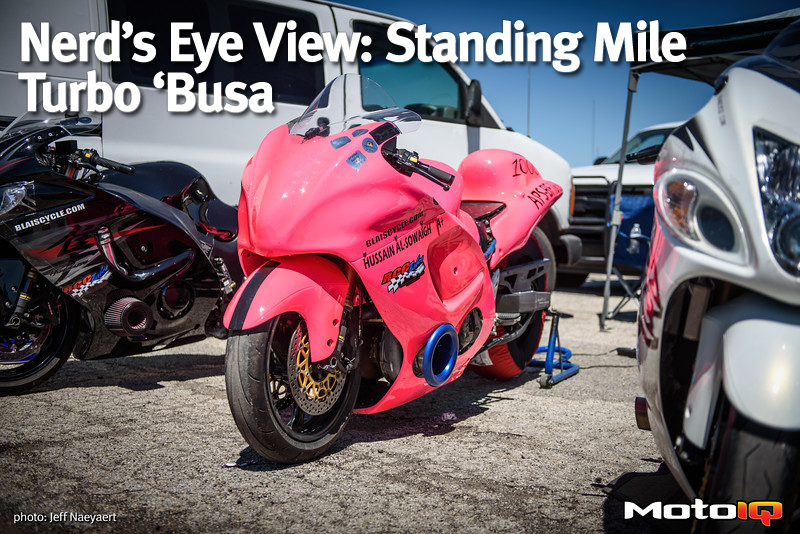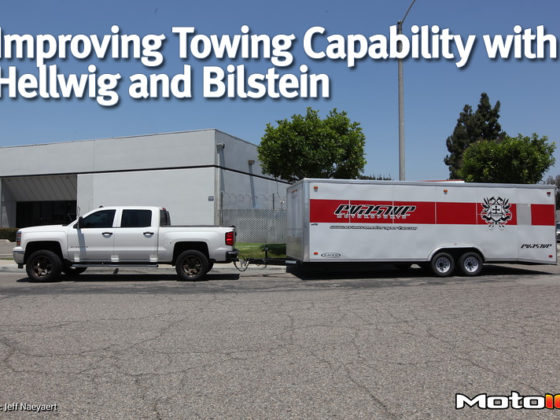
Nerd’s Eye View: Standing Mile Turbo ‘Busa
Many of us at MotoIQ ride on two wheels. I personally have a CBR 600RR. I rode an R1 once and had to get off after doing about 30 wheelies for fun. Hussain’s turbo Hayabusa probably has in the ballpark of eight times the power of my CBR. In my experience, it takes a special set of cajones to sit on top of an engine with that much power between your legs. We’re going to have a look at the parts which help this bike go over a quarter of a grand miles per hour in a mile from a standing start.
 Sure, a Suzuki Hayabusa is fast stock, but everything with an engine is made better with a turbo!
Sure, a Suzuki Hayabusa is fast stock, but everything with an engine is made better with a turbo! A big Garrett GTX turbo crams the high pressure air into the engine for more power. To help the air make the turn into the compressor inlet, the massive air horn/trumpet/velocity stack gives the air a gentler radius over which to make the turn reducing the loss coefficient and reducing flow separation. A straight tube with sharp edges sticking out into the airstream would perform more poorly.
A big Garrett GTX turbo crams the high pressure air into the engine for more power. To help the air make the turn into the compressor inlet, the massive air horn/trumpet/velocity stack gives the air a gentler radius over which to make the turn reducing the loss coefficient and reducing flow separation. A straight tube with sharp edges sticking out into the airstream would perform more poorly. The big Garrett turbos typically use a V-band joint on the compressor discharge to ensure the outlet tube doesn’t blow off.
The big Garrett turbos typically use a V-band joint on the compressor discharge to ensure the outlet tube doesn’t blow off. On the compressor outlet pipe is this hose tapped into the side.
On the compressor outlet pipe is this hose tapped into the side. The stock ‘Busa engine is only 1.3L, so trying to spin up a big turbo can take a while. A bit of nitrous to the rescue!
The stock ‘Busa engine is only 1.3L, so trying to spin up a big turbo can take a while. A bit of nitrous to the rescue!



3 comments
what size in diameter is the midpipe ??
can you also explain the ” protection” around the midpipe that used as to prevent some materials inside body frame to melt?
That size turbo has a 4″ turbine outlet. Standard exhaust wrap on the mid-pipe.
4″ is abt 101 mm…. this is quite big considering that most people are using abt 70 mm max..
Understand this eliminates back pressure and l the gasses flow naturally!
Mine has only 62.5 mm and was considering options to replace with wider once boost pressure comes up as to eliminate any issues of back pressure etc etc.